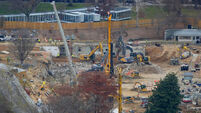‘Black-hole bully’ shoots deadly jet at neighbour
Telescopes have captured images of this cosmic violence, according to a study released by NASA.
“It’s like a bully, a black-hole bully punching the nose of a passing galaxy,” said astrophysicist Neil deGrasse Tyson, director of the Hayden Planetarium in New York.














